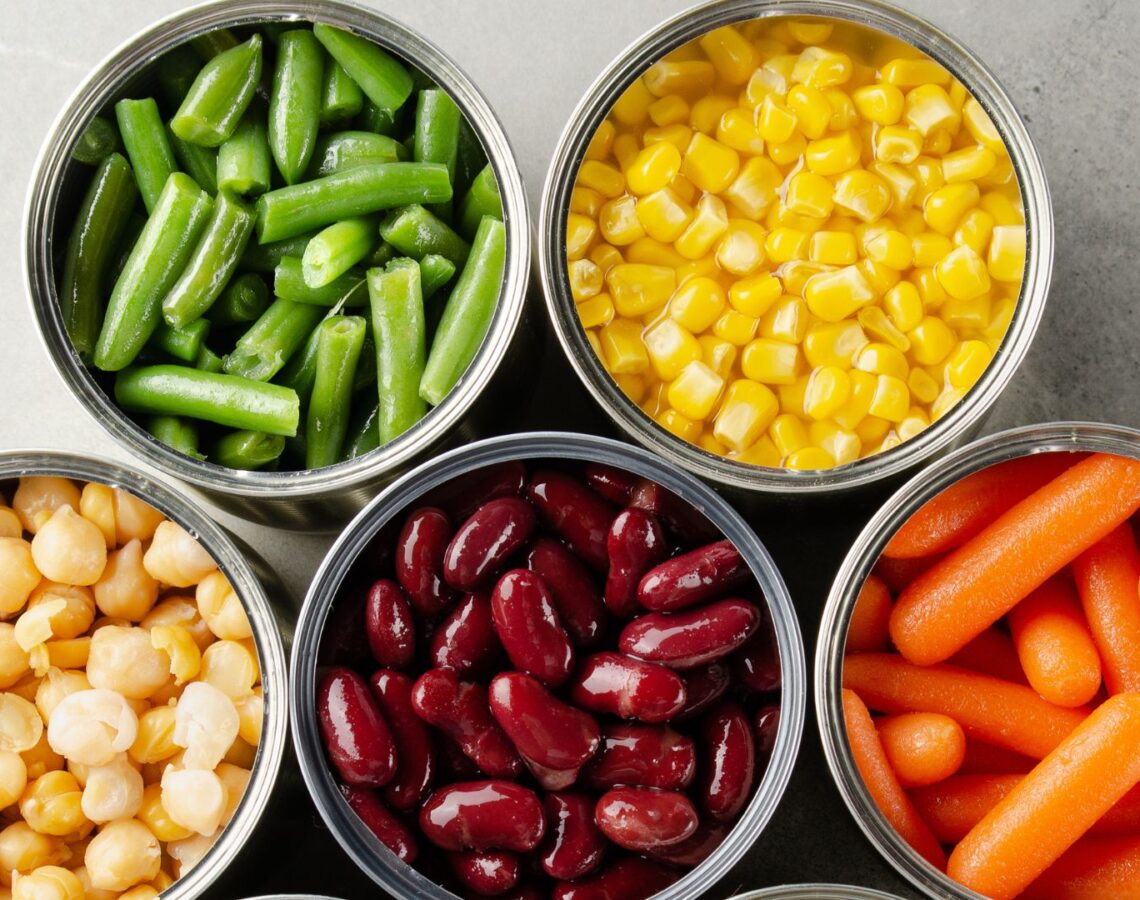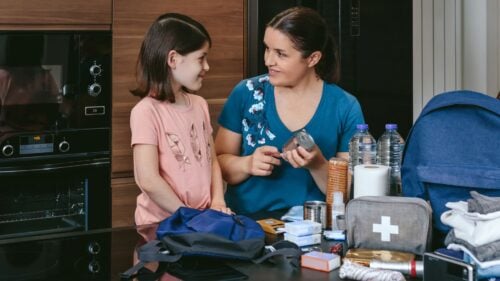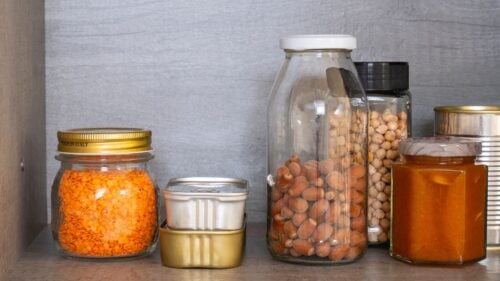Packing your emergency kit: Best food items to be prepared

Natural disasters like cyclones, floods, storms, and bushfires can strike without warning, often leaving families cut off from vital resources like fresh food and water. During uncertain times, a well-stocked pantry of canned and non-perishable foods can be your best defence, ensuring you stay nourished and safe.
Let’s explore why having a non-perishable food supply in your emergency kit is crucial, how to choose the right foods, and the benefits they bring.
Be sure to check out our helpful grocery list at the end for practical food suggestions.
Why stock up on canned and non-perishable foods?
Long shelf life and easy storage
One of the greatest benefits of canned and non-perishable foods is their extended shelf life. Unlike fresh produce, which can spoil quickly, these foods are designed to last months or even years, without the need for refrigeration1. This makes them an invaluable resource during natural disasters when power outages or food supply disruptions might limit access to fresh food.
Canned and non-perishable foods are also compact, easy to store, and can be kept at room temperature, making them perfect for your pantry or emergency kit2. Many canned items are ready to eat straight away or require minimal preparation, particularly when cooking facilities may be limited.
Nutritious and balanced
A common misconception about canned foods is that it lacks nutritional value. However, many canned and non-perishable foods are packed with essential nutrients3. For example, canned beans, vegetables, fruits, and meats provide important vitamins, minerals, protein and fibre. Pick options with low or no added sodium/salt or sugar for the best choice when they are available.
Non-perishable foods are also a great option for people with dietary restrictions. With a little research, you can find gluten-free, vegetarian, vegan and other speciality items in canned form to suit your needs.
Budget-friendly
During a natural disaster, food prices can rise quickly, especially for fresh produce and perishable items that might be hard to find. Canned and non-perishable foods, on the other hand, are often much more affordable and can be bought in bulk, saving you money. Stocking up in advance can ensure you are prepared without stretching your budget.

Tips for using canned and non-perishable foods in emergencies
1. Plan your meals
When preparing for an emergency, it’s not just about stocking up on food—it’s about planning. Think ahead about how you can combine different canned and non-perishable foods to create balanced meals. For example, canned beans, pasta, and vegetables can be combined to make a nutritious stew or soup. The more variety you have, the easier it will be to create diverse meals that you enjoy, even when fresh ingredients aren’t available.
2. Don’t forget water
Water is just as important as food in emergencies. Ensure you store enough for drinking, cooking, and hygiene purposes. A good rule of thumb is to have at least 10 litres of drinking water per person, although you may want to have more depending on your family size and the length of the anticipated event4.
3. Check expiration dates regularly
While many canned and non-perishable foods last for a long time, they do have a shelf life. Rotate your stock by using older items and replacing them with fresh supplies1. Some canned goods may last beyond their expiration date, but it’s best to follow the manufacturer’s guidelines to ensure freshness and safety5.
4. Choose a range of nutritious food options
During emergencies, nutrition counts. Stock up on nutrient-rich, long-lasting foods:
- Vegetables and fruits: Choose canned vegetables, dried fruit and long-lasting fresh produce such as carrots or unripe bananas for essential nutrients and fibre.
- Protein sources: Canned fish or meats, nuts and seeds help keep you fuller for longer.
- Carbohydrates: Energy-rich options include canned beans, cereals, rice, pasta, and wholegrain rice cakes or crackers.
- Dairy and healthy fats: Long-life milk provides calcium and protein, and natural peanut butter and avocado are a source of healthy fats for sustained energy.
Including a mix of these in your meals or snacks will ensure balanced nutrition that keeps your energy levels up.
What food items should you add to your emergency kit?
When preparing for a natural disaster, having a variety of canned and non-perishable foods will help ensure you’re ready for any situation. Here’s a basic shopping list to get you started:
Meats and alternatives:
- Canned legumes (kidney beans, chickpeas, lentils)
- Canned meat, fish or chicken
Ready-to-eat meals:
- Canned soups with meat or legumes
- Canned chilli or stew
- Shelf-stable meals such as chicken and rice or tuna and pasta bowls
Fruits and vegetables:
- Canned fruit (in natural juice, not syrup)
- Canned vegetables (corn, peas, beans, asparagus, beetroot)
- Canned mixed vegetables
- Long-lasting fresh fruit such as apples, stone fruit or unripe bananas
- Long-lasting fresh vegetables such as potatoes, sweet potatoes, onions, carrots, cucumber or cherry tomatoes
Snacks:
- Mixed nuts
- Dried fruits
- Crackers or rice cakes
- Muesli bars
Other essentials:
- Long-life milk or plant-based milk
- Cereals
- Wraps
- Pasta and rice
- Nut butters (peanut butter, almond butter)
- Shelf-stable 100% fruit or vegetable juice (opt for low sodium) or beverages
- Instant coffee or tea bags
- Oils
- Bottled water
This list ensures you have a balance of proteins, vegetables, fruits, snacks, and energy-packed foods to get you through an emergency situation. Be sure to consider dietary restrictions and preferences when selecting items for your supplies.

Feeding your baby during an emergency
Babies aged up to 6 months
To stay safe:
- offer breastfeeds as you did before the emergency
- ensure you drink enough water if you are breastfeeding
- do not give water if your baby is aged less than 6 months, unless recommended by a doctor.
- You can continue to give expressed breastmilk in a feeding bottle if the electricity and water supplies have been interrupted. Please ensure feeding bottles and teats are washed with cold soapy water using wet paper towels. Then sterilise with chemical sterilising using cold water.
Babies aged 6-12 months
To stay safe:
- continue to breastfeed as you did before the emergency. If it is hot, offer your baby more breastfeeds or small sips of water between feeds.
- do not give your baby expressed breast milk during an emergency where electricity and water supplies have been interrupted
- consider how much complementary food your baby is eating and use this information to guide your purchasing
- buy small or single serves and discard any opened food that may spoil if not eaten immediately
- do not give your baby food that has passed its best-before date
- wash your baby’s hands (and your own) before feeding
- throw out used utensils to prevent contamination.
Further information can be found on the Australian Breastfeeding Association website6
For information regarding formula feeding during an emergency please refer to Queensland Health.
Sources:
- Food Standards Australia New Zealand. (2022). Prevention of foodborne illness – Canned foods. Australian Government. https://www.foodstandards.gov.au/consumer/prevention-of-foodborne-illness/cannedfoods
- Queensland Government. (2025). Emergency kit. Get Ready Queensland. https://www.getready.qld.gov.au/emergencykit
- Foodbank Australia. (2025). The truth about canned foods. Foodbank Australia. https://www.foodbank.org.au/truth-about-canned-foods/
- Queensland Government. (2017). Emergency pantry list. Queensland Government. https://www.qld.gov.au/emergency/dealing-disasters/prepare-for-disasters/food-during-disaster/emergency-pantry-list
- Better Health Channel. (2023). Food – use-by and best-before dates. Victoria State Government. https://www.betterhealth.vic.gov.au/health/healthyliving/food-use-by-and-best-before-dates
- Queensland Government. (2024). Breastfeeding in an emergency. Queensland Government. https://www.qld.gov.au/emergency/dealing-disasters/prepare-for-disasters/food-during-disaster/breastfeeding-emergency


